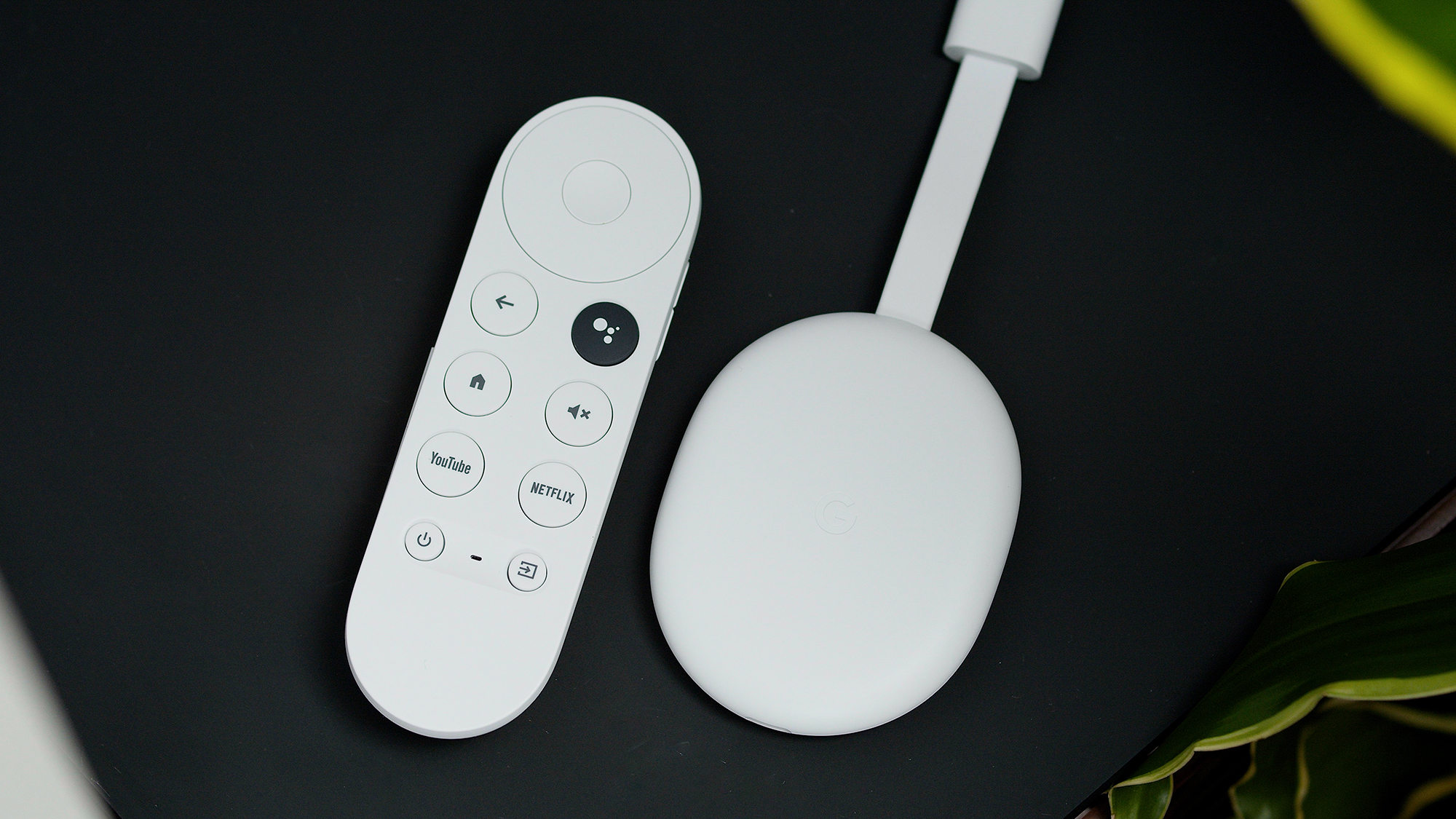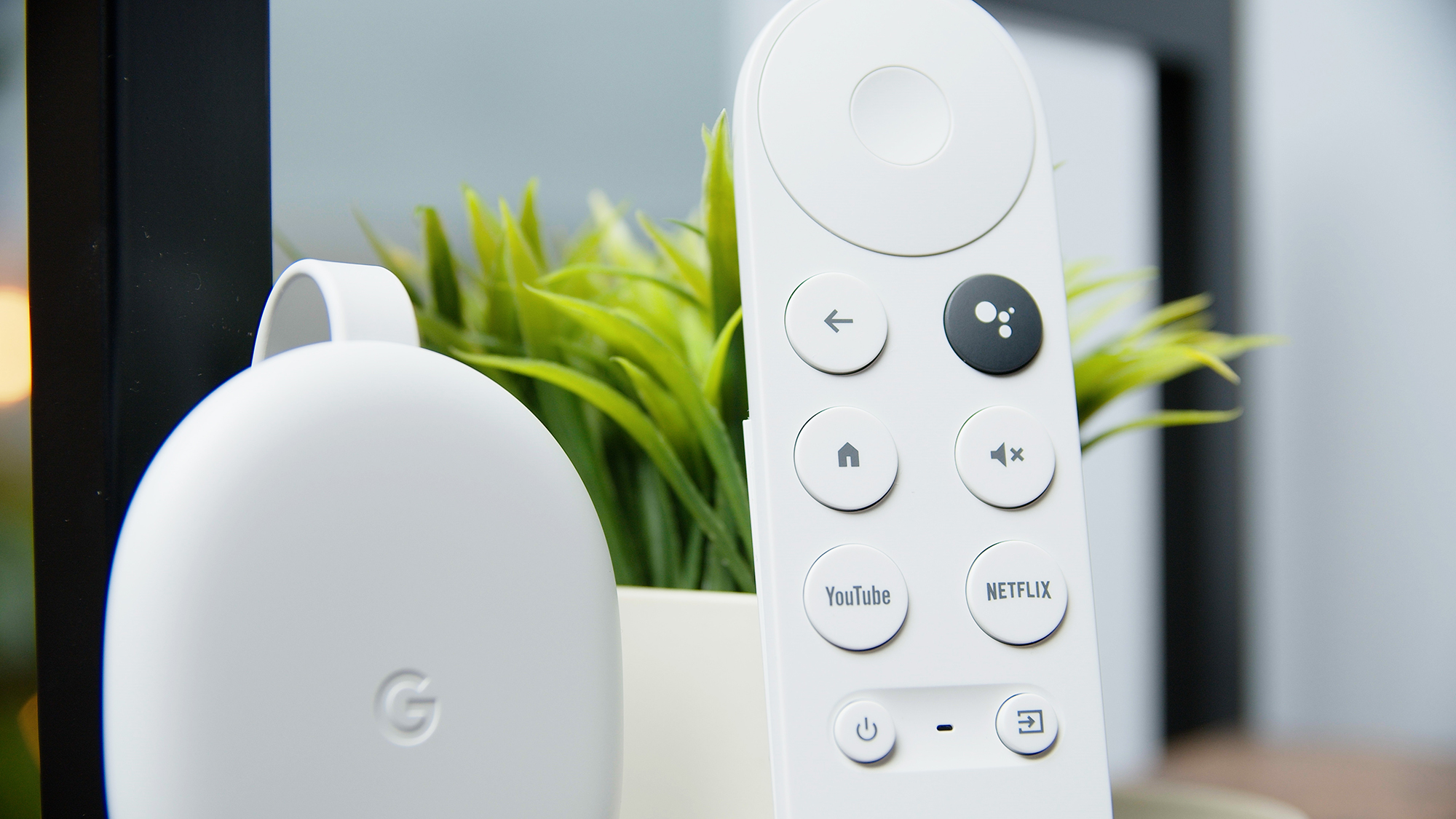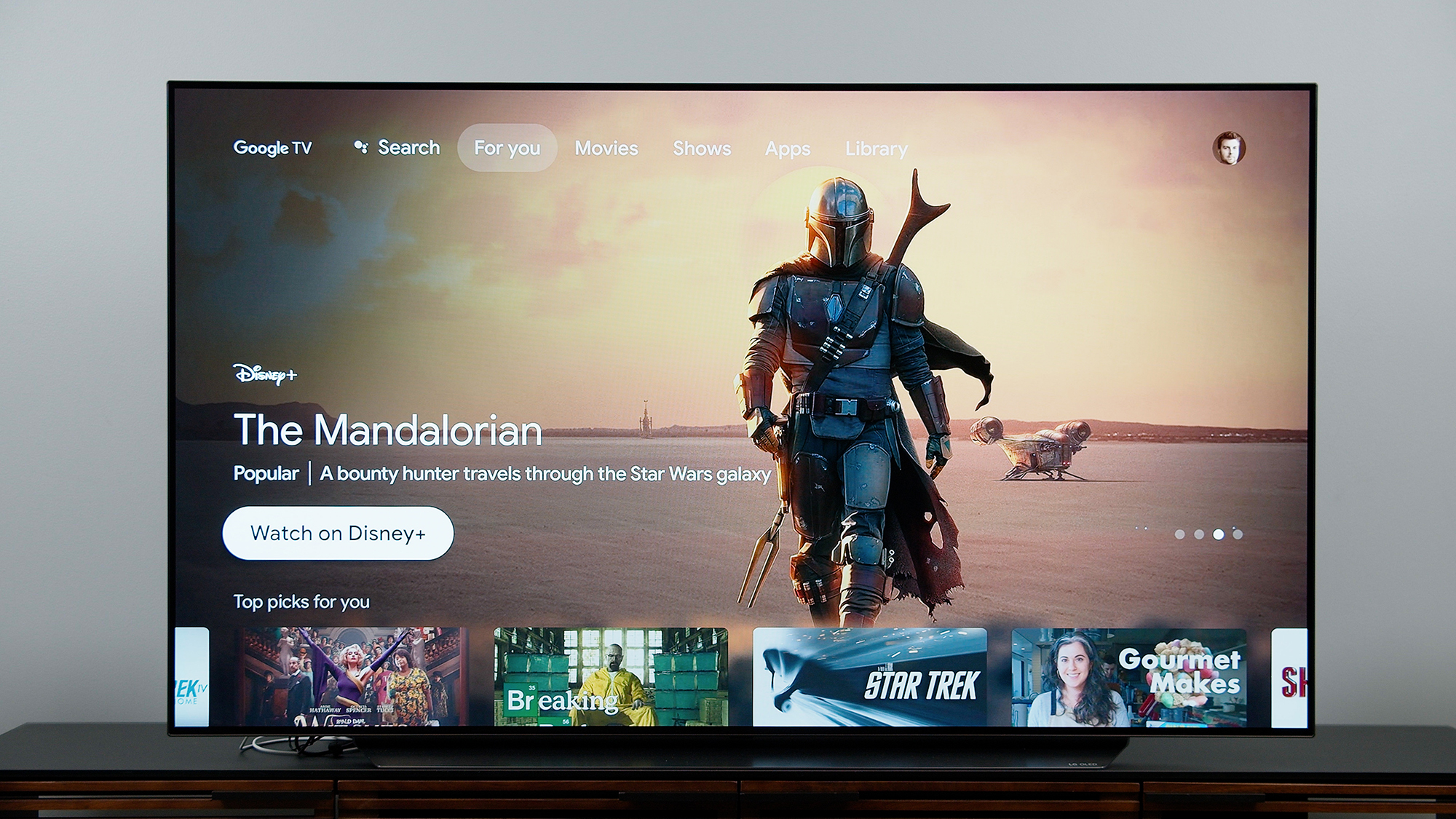- Affordable
- Dolby Vision and Dolby Atmos support
- Slick UI
- Responsive
- Integrated Google Assistant
- Dolby Vision always on by default
- Recommendation algorithm still learning
I’m impressed. The new Google Chromecast with Google TV looked pretty good on paper, but now that I’ve been using one for the past couple of weeks, I can safely say it’s even better than I expected.
I never warmed up to the original Chromecast. Call me old school, but I like a remote control and an on-screen interface — the original Chromecasts had neither. I just couldn’t get down with my phone, tablet, or PC being the primary control for my TV watching. The $35 Google Chromecast that’s been around for 7 years was never for me, and the $70 Google Chromecast Ultra’s 4K resolution wasn’t enough to lure me in. But the new $50 Google Chromecast with Google TV is priced better, does more, and, to my surprise, I’m really into it.
That doesn’t necessarily mean the Google Chromecast with Google TV is right for everyone, though. So let’s dig into what this little dongle can and can’t do, and whether it’s right for you.
Note: Google in September 2022 released an HD version of this Chromecast that tops out at 1080p and lacks other features like Dolby Vision.
Out of the box
The Google Chromecast with Google TV has an unnecessarily long name, even if it is technically meaningful in distinguishing what’s different about it compared to previous Chromecast versions (more on that in a minute). Fortunately, just about everything else about the device is dead simple.

It all starts with the packaging and what’s in the box. The packaging appears to be almost entirely recyclable — and there isn’t much of it. In the box is the Chromecast dongle, a remote, a small USB-A power brick, a USB-A to USB-C cable, and two AAA batteries — and folks, I love the batteries.
Yeah, you read that right. The AAA batteries Google ships with the new Chromecast have the same silky, rubbery, silicone exterior as the Chromecast dongle, remote control, and power cable. I actually giggled with delight when I shucked them from their plastic cocoon to put them into the remote. Nice touch, Google. Unboxing win.
Features and specs
As is well-known, the original Chromecast and Chromecast Ultra (4K) let users find content on their phones and “cast” it to their TV to watch on the big screen. The original devices were essentially invisible. The big improvement here is the addition of an on-screen interface and a remote control.
The remote control comes with power and volume buttons that control your TV. Oddly, the power button is located on the lower-left section of the compact remote, but the volume buttons on the side will feel familiar to anyone who has used a Roku or Amazon Fire TV remote with similar buttons.
At the top of the remote is a circle that allows you to click up, down, left, and right. Below the circle are a Google Assistant button, a “back” key, a mute button, two hotkeys for accessing YouTube and Netflix, and a home button. The remote feels great, but the button layout took some getting used to, if only because I’ve been using other streaming device remotes for so long.

The Chromecast dongle plugs directly into a TV’s HDMI port, which eliminates any concern about having a high-speed HDMI cable that will support 4K HDR and Dolby Vision.
That brings up two of the most astounding features found in the new Google Chromecast, especially for the $50 price: Dolby Vision and Dolby Atmos. Dolby Vision content libraries are growing at a quick clip on services like Netflix, Disney +, and Amazon Prime Video, and with a Dolby Vision-capable TV, that content looks fantastic. Dolby Atmos surround sound support is also available, but its availability will vary from one streaming app to another.
Google doesn’t publish much around the new Chromecast’s antenna, but from my experience, it has done a better-than-average job of pulling in Wi-Fi signals for steady streaming.
Setup
As easy as it is to use the new Chromecast, getting it set up takes some time. That’s true for many streaming devices today as they get more advanced. There are some hoops to jump through here that are unique to the new Chromecast, though.
If you don’t already have the Google Home app for iOS or Android, you’ll want to download it — it’s required to get the Chromecast set up. Once the Chromecast with Google TV is powered up, it will appear as a new device to set up within the Google Home app. Simply follow the instructions and the device will be connected to your network in no time. Most folks will use Wi-Fi, but there is an Ethernet adapter accessor available as an added purchase.
From there, the Chromecast will offer a few apps to install (any others must be installed manually at a later time), test to operate your TV’s power and volume, fetch some updates, restart a few times, set up Google Assistant voice tracking — and ultimately the device will be set up. This will take a while. But wait, there’s more.

Here is where Google could vastly improve the Google TV experience: By logging users into their streaming apps. Google stores all my passwords. I’m logged into my apps on my Android phone. It’s not a huge ask for Google to automate the sign-in process. So … please, Google?
For now, users must go through the tedious process of entering usernames and passwords for all the streaming apps to which they subscribe. Frankly, this is probably the most time-consuming part of the setup.
One final and very important note: By default, the new Chromecast ships with always-on Dolby Vision. This means that if your TV supports Dolby Vision, everything will be presented in Dolby Vision, and thus your picture presets will be limited. Not only that, but non-Dolby Vision content won’t look right. Even the colors of apps on Google TV don’t look right. To fix this, navigate to Settings, and under Video Settings, select Match Content. This ensures the TV only goes into Dolby Vision mode when Dolby Vision content is playing.
The Google TV part
The new Google Chromecast with Google TV is all about the Google TV on-screen interface, and though it looks quite different from the Android TV interface found in Sony and some Hisense TVs, as well as the Nvidia Shield, it feels familiar despite some key differences.
Google TV is heavily focused on content recommendation. It learns what you like to watch over time and attempts to put the content you want front and center. Furthermore, it doesn’t require you to go into a specific app to watch it. Not manually, anyway. You’ll simply see a place to click on Captain Marvel right next to a slide to click on Stranger Things. There’s nothing denoting the content is on HBO Max or Netflix respectively. Not until the next screen where you press the play button, anyway.

If you want to explore content available on a given platform like Netflix or HBO Max, the apps are all laid out on a strip just below the “For You” section. Whether you will need/want to do so may depend on how well Google figures out your viewing preferences and habits.
Clearly, for households with several viewers, individual profile support is crucial and, not to worry, the new Chromecast does support that, just not in the way you might expect if you’re used to Disney + or Netflix’s approach.
For individual Google TV content recommendations, users will need to sign into their own Google account. This has no impact on individual apps, though. No matter whose Google account is being used, Netflix and other apps will still offer the same profiles based on whoever is signed into those apps.
Performance
The new Google Chromecast with Google TV performs well as a piece of streaming hardware. It does a pretty decent job of keeping up with my fast-paced clicking and scrolling, though I can certainly catch it lagging behind when I push it hard, similar to the experience I’ve had with the Amazon Fire TV Stick and Roku Streaming Stick +.
Apps and content load quickly, too. Casting is the same as it’s ever been, so no changes there. Overall, the device is perfectly capable given its $50 price. You’d have to step up to an Amazon Fire TV Cube or the new Roku Ultra to get anything substantially faster or more powerful.
To me, though, the real performance metric here is that of the Google TV experience. And on that front, I have to say: So far, so good.
Google TV hasn’t totally nailed down my viewing preferences, but to be fair, I’ve only been using it for a couple of weeks. I also expect Google to throw a few things against the wall to see what sticks with me. The process takes time, and I’ll update this section as I learn more.

I also enjoy having my YouTube suggested videos looking exactly the same on my TV as they look on my phone. It’s the little things.
The new Chromecast also joins up with many other Google smart home devices, making it possible to look at video feeds from Google Nest Cameras and Google Nest doorbells and act as part of a whole-home audio solution. You can also control the new Chromecast using a Google Home or Google Nest speaker.
Clearly, the Chromecast with Google TV offers more value to Android Phone users and fans of Google products in general. If you’re a hardcore Apple fan, the Apple TV 4K can offer a similar experience — for about three times the cost.
Still, purely on its merits as a streaming device, I think the new Google Chromecast with Google TV is a fantastic choice for just about anyone who isn’t already married to a smart TV platform.
Our take
The new Google Chromecast with Google TV is a smart move in the right direction for a huge tech company that needed a little more presence in the streaming hardware space. The original Chromecast sold well because it was so cheap, but I think this new model is going to sell even better because it is a device you can interact with. If Google can get its content recommendation engine matured, this could be the world’s bestselling streamer in a matter of months.
Is there a better alternative?
The Roku Streaming Stick + offers a simple streaming platform with its own advantages but doesn’t offer the sort of content recommendation Google TV does. At $40 and with 4K/HDR capabilities, it is a strong option, but I’m reluctant to call it “better.” By comparison, the Amazon Fire TV 4K also supports Dolby Vision, is tied firmly to the Amazon universe with Alexa integration, and costs $50. With similar specs, the choice comes down to whether you are on Team Google or Team Amazon.
How long will it last?
It’s difficult to imagine a scenario in which the new Google Chromecast with Google TV would become irrelevant inside four or five years, which is about as long as you would want to use the device before getting the new latest thing anyway.
Should you buy it?
Yes. The new Google Chromecast with Google TV is an outstanding product.





